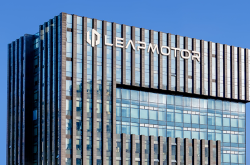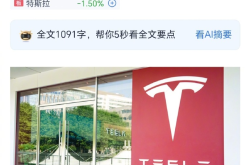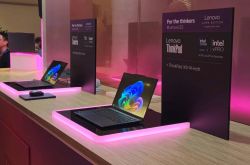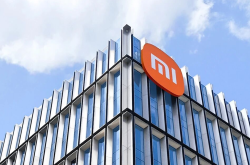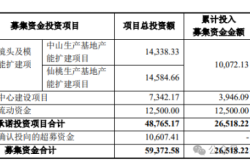Leapmotor: A Multitude of Paths to Profitability
![]() 11/20 2025
11/20 2025
![]() 442
442
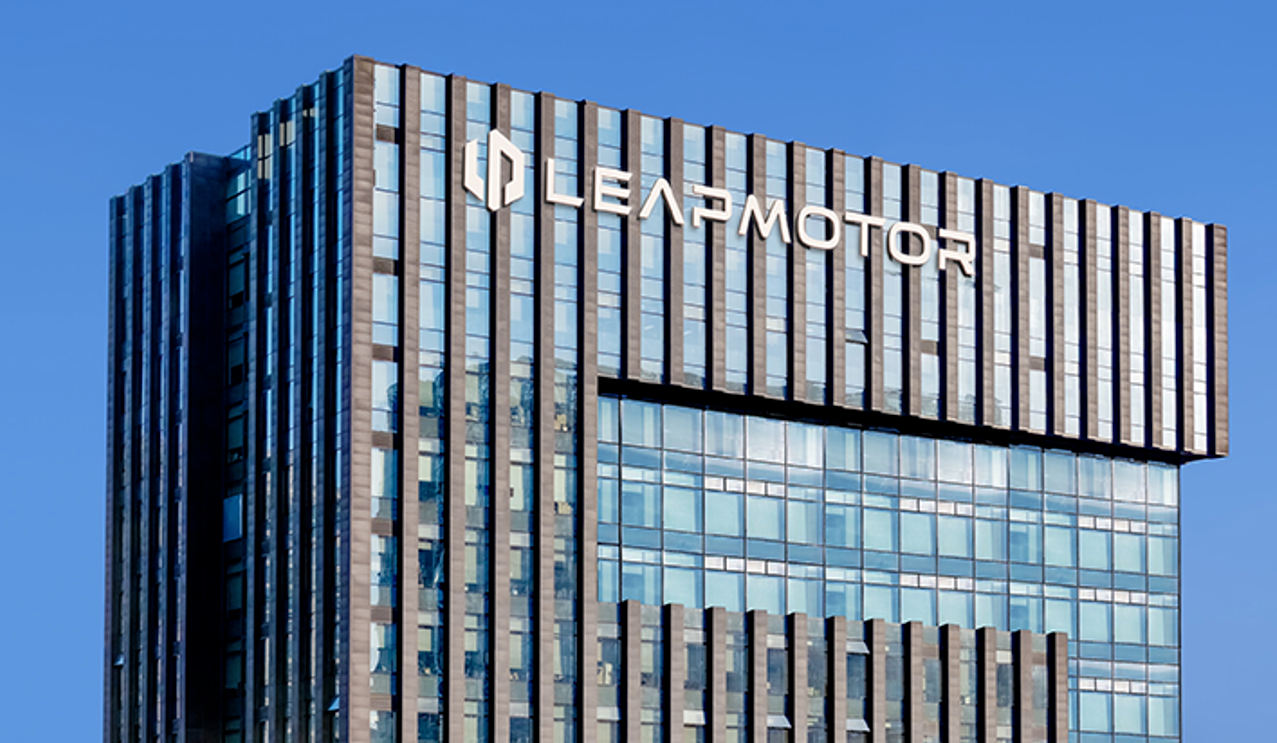
Source: YuanSight
150 million RMB.
This figure represents the net profit that Leapmotor, a new energy vehicle (NEV) startup, raked in during the third quarter of this year. Coupled with the 33.03 million RMB profit from the second quarter, this company has not only achieved profitability for two consecutive quarters but also managed to maintain a surplus even after offsetting the losses incurred in the first quarter. Such a performance not only sets it apart from other emerging NEV startups but also stands out in a challenging environment where many established automakers, and even multinational giants, are struggling to turn their fortunes around.
When it comes to Leapmotor's sustained profitability, many attribute it to the company's aggressive pricing strategy and its success in driving up sales volumes.
Indeed, as an automaker that has catapulted into the domestic top 10 in monthly sales and has already surpassed its annual target of 500,000 units ahead of schedule in 2025, Leapmotor's average selling price for new vehicles is relatively modest within the industry. However, the question arises: Can profitability be solely achieved through cost-effectiveness and high sales volumes? The industry offers several straightforward counterexamples. For instance, a peer NEV startup also witnessed record-high sales in the third quarter and was lauded for its aggressive pricing, yet it still fell short of achieving profitability.
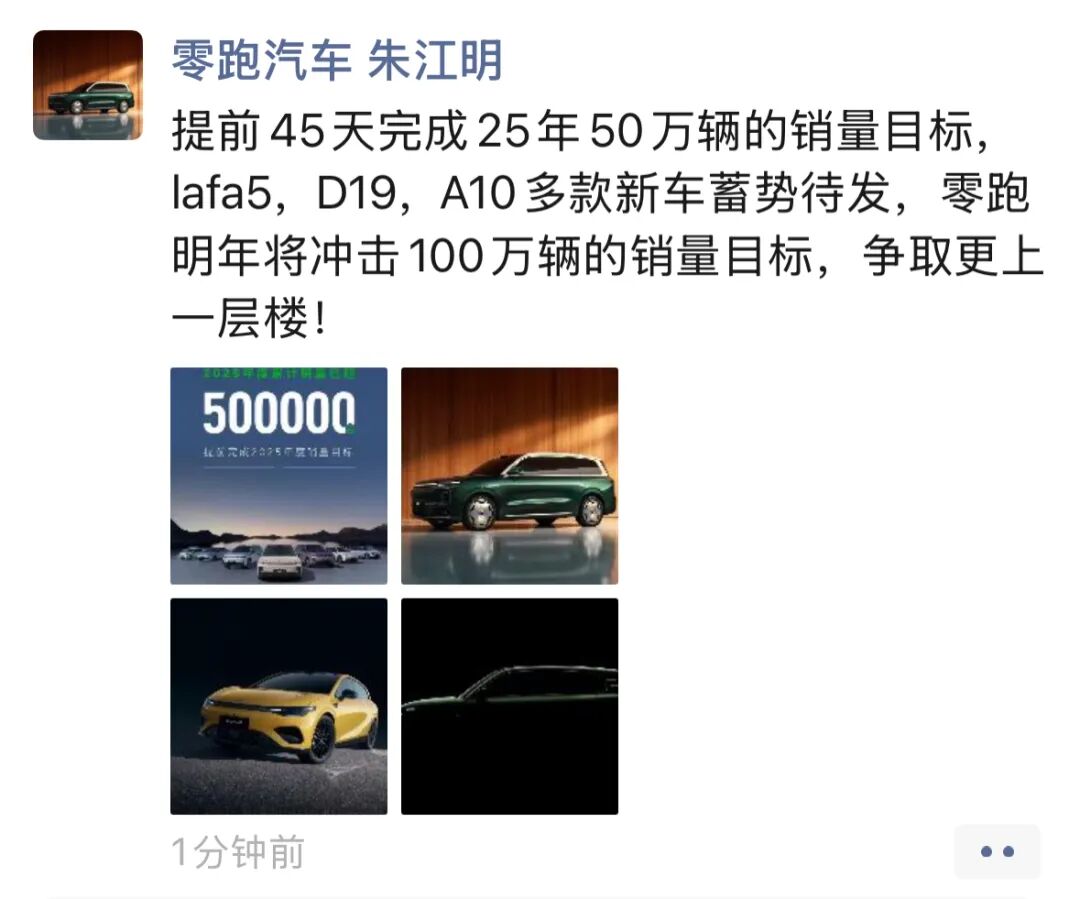
Screenshot of a WeChat Moments post by Zhu Jiangming, the Founder, Chairman, and CEO of Leapmotor
Therefore, it's evident that Leapmotor's profitability isn't merely a result of selling large volumes at low margins.
01
Competing on Price Necessitates Competing on Technology First
A closer examination of Leapmotor's best-selling models reveals that they are primarily concentrated in the 100,000–150,000 RMB price range. This segment is fiercely competitive, with a plethora of new models vying for attention and represents the last stronghold for traditional automakers in terms of sales volume. Leapmotor's ability to thrive in this "red ocean" market stems from the fact that there are no direct substitutes at the same price point.
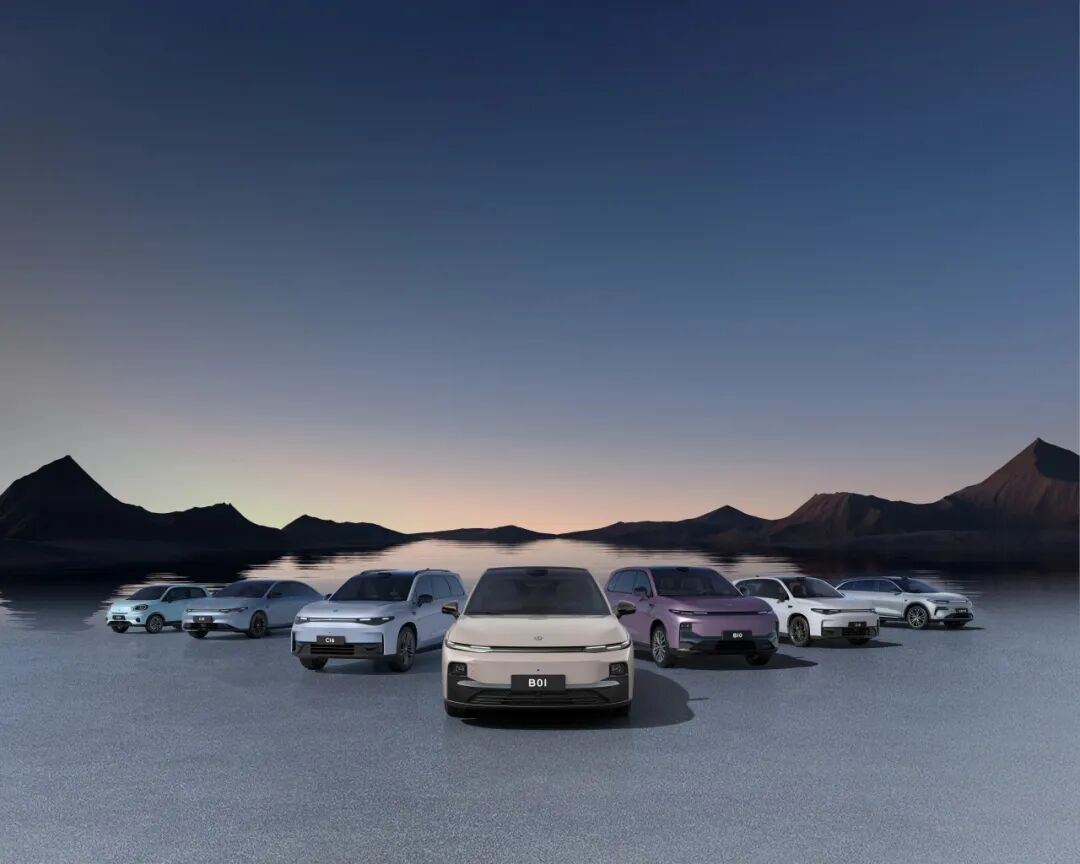
Leapmotor's Current Lineup of Branded Vehicles
Take the 2026 Leapmotor C11 as an example. After its refresh in July this year, it became the only extended-range SUV in its price range to offer a pure electric driving range (NEDC) of 300 kilometers. While there's no direct evidence to suggest that consumers are solely purchasing the Leapmotor C11 for this feature, the fact remains that its sales have continued to surge post-refresh, with both September and October witnessing it become a new monthly bestseller, with over 10,000 units sold.
Another Leapmotor model, the B01, which has also consistently achieved monthly sales of over 10,000 units, shares similar characteristics.
A search for vehicles priced between 110,000 and 120,000 RMB equipped with LiDAR on a shopping guide platform yields only two models: the Leapmotor B01 and Leapmotor B10. In other words, if consumers have a limited budget but still want to stay abreast of the latest trends and purchase a vehicle with assisted driving capabilities, Leapmotor is the brand most likely to be recommended.
Is Leapmotor able to position multiple models in unique ecological niches based on their configurations because it is sacrificing profits and selling at a loss? Quite the contrary. After the monthly sales of the C11 and B01 models surged to 10,000 units in the third quarter, Leapmotor's overall gross profit margin increased.
Financial reports indicate that Leapmotor's gross profit margin from July to September was 14.5%, up 0.9 percentage points from the second quarter of 2025. Regarding the sequential improvement in gross profit margin, Leapmotor attributed it to two factors: first, the optimization of the product mix; and second, continuous cost management.
So, how does Leapmotor manage to make its new models both unique selling points and profitable? The answer lies in its self-developed technology.
Taking the extended-range version of the 2026 Leapmotor C11 as an example, its ability to achieve a pure electric driving range of 300 kilometers relies on the self-developed CTC2.0 Plus battery-chassis integration technology. Simply put, this technology involves removing the outer casing of the battery pack and integrating it directly with the chassis, allowing for more batteries to be installed.
The challenge with this battery placement solution lies in ensuring safety. However, Leapmotor's CTC2.0 Plus technology meets the 2025 new national standards for power batteries, ensuring no fire or explosion within 48 hours after thermal runaway—a feat that commands respect.
In addition to CTC2.0 Plus, Leapmotor has developed numerous other self-developed technologies and components, ranging from extended-range engines to electric motors, and from intelligent cockpits to assisted driving software. All of these have been independently developed and are now in mass production. Without this self-sufficiency, Leapmotor's "irresistible prices" would not be feasible.
02
Meeting Demand Drives Leapmotor's Success
Although Leapmotor boasts a plethora of self-developed technologies, those who have closely followed its financial reports know that the R&D expenditure of this new NEV startup has always been judiciously managed.
According to the third-quarter financial report, Leapmotor's R&D expenditure was 1.21 billion RMB, representing a year-on-year increase of 55.4% and a sequential increase of 11.4%. While this R&D spending may not be eye-catching in the automotive market, from the perspective of input-output efficiency, it leads the industry.
Especially with the unveiling of the flagship SUV D19, Leapmotor's R&D efficiency has further impressed its competitors.
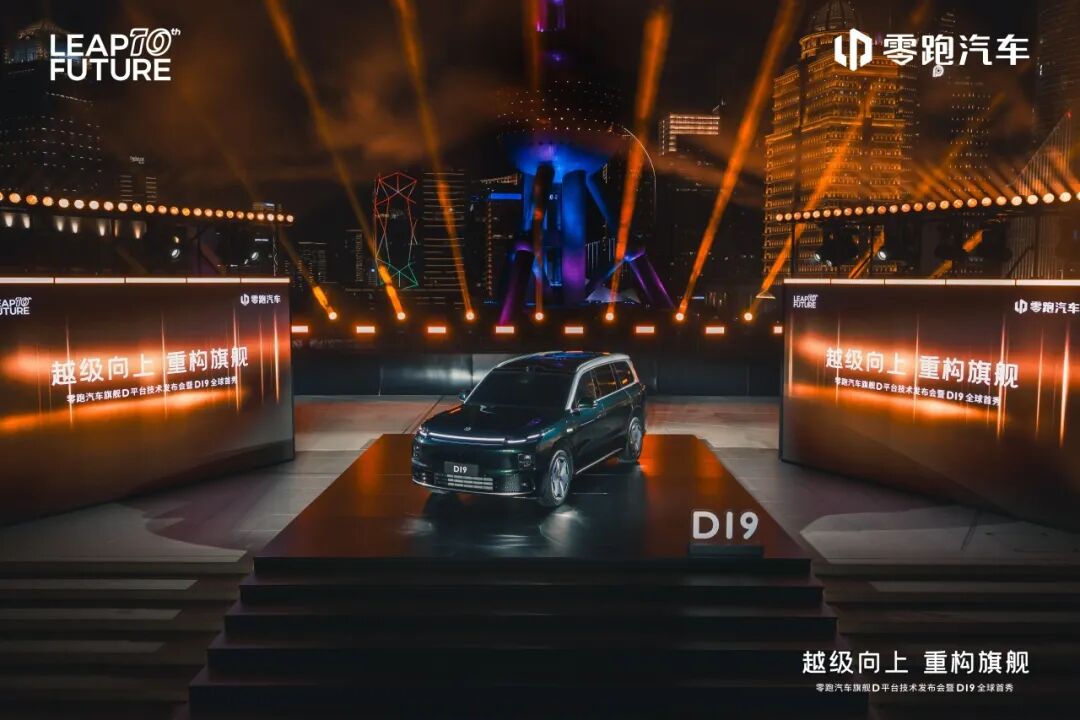
Global Debut of the Leapmotor D19
"We originally thought that achieving this feature (a front trunk capable of holding three suitcases) might take others more than a year, but now it seems that others can achieve it in about seven months."
Recently, Li Bin, the Founder, Chairman, and CEO of NIO, publicly stated that the design advantage of the Extra-large front spare box (extra-large front trunk) on the L90 and third-generation ES8 models, which has been well-received, will soon be surpassed. The "others" he referred to might very well be Leapmotor. It is reported that the pure electric version of the Leapmotor D19, with its new three-electric system layout, also features a front trunk with a surprisingly large capacity.
Looking back at Leapmotor's self-developed technology directions in recent years, it is evident that the company has consistently allocated its resources to meet market demands at critical junctures.
In 2024, LiDAR and the assisted driving it represents became a market hotspot. Leapmotor quickly followed suit by combining its self-developed algorithms to launch new models like the C10 and C16, filling the market gap for LiDAR-equipped vehicles priced under 200,000 RMB. In 2025, as large-battery extended-range hybrid vehicles gained popularity, Leapmotor promptly introduced the D19 extended-range version equipped with an 80.3 kWh large battery, becoming a highly representative new model in this segment.
To a certain extent, it is Leapmotor's insightful and accurate anticipation of market demands that has enabled it to create profitability within limited resources. This characteristic is not limited to the domestic market or vehicle sales business.
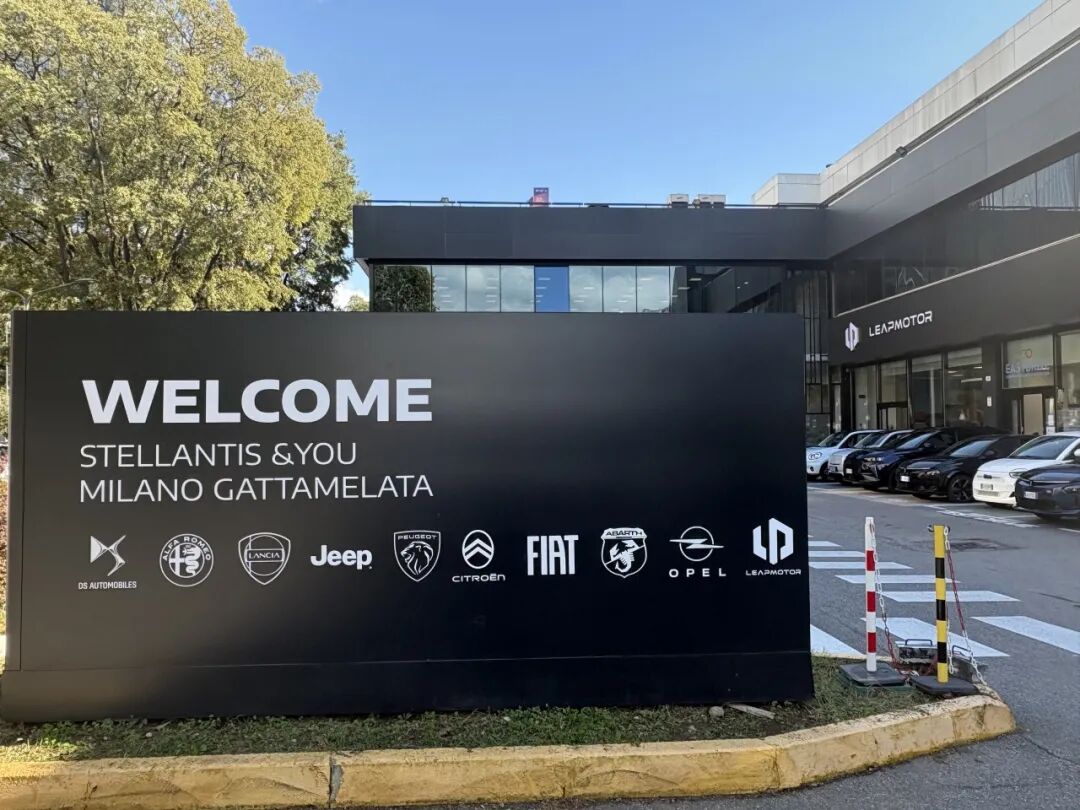
Leapmotor's Overseas Store
"Do not underestimate Leapmotor's cooperation with Stellantis. It has opened up many new avenues for Leapmotor to make profits."
On November 19, a source familiar with Leapmotor told YuanSight that currently, Leapmotor not only profits from new vehicles sold overseas through Stellantis' channels via the joint venture but also earns significant revenue from providing components and technology solutions to Stellantis. Additionally, Leapmotor can obtain carbon credits from selling new energy vehicles overseas, the value of which is also considerable.

Leapmotor B10 Being Shipped Overseas
Furthermore, Li Tengfei, the Vice President of Leapmotor, revealed during the third-quarter 2025 earnings call that the carbon credit revenue from transactions with the Stellantis Group reached 250 million RMB in the third quarter of this year and is expected to grow to around 500 million RMB in the fourth quarter.
According to the carbon credit transfer agreement signed between Leapmotor and a subsidiary of the Stellantis Group in July this year, the annual cap for carbon credit transactions between the two parties during the agreement's validity period is 1.5 billion RMB.
It is evident that whether it is at the level of specific product development or major business collaborations at the corporate level, Leapmotor has clear goals, with all important decisions supported by market demands and feasibility. Some may argue that this is hindsight, but while one success may be coincidental, Leapmotor has achieved its current state of sustained profitability by making the right moves at every step.
It is expected that Leapmotor will reach new heights in both sales volume and profitability in the fourth quarter of this year. However, this is just the prelude. Next year, if its brand elevation and overseas business expansion proceed smoothly, Leapmotor will truly erupt in full force.
Some images are sourced from the internet. Please notify us for removal if there is any infringement.

